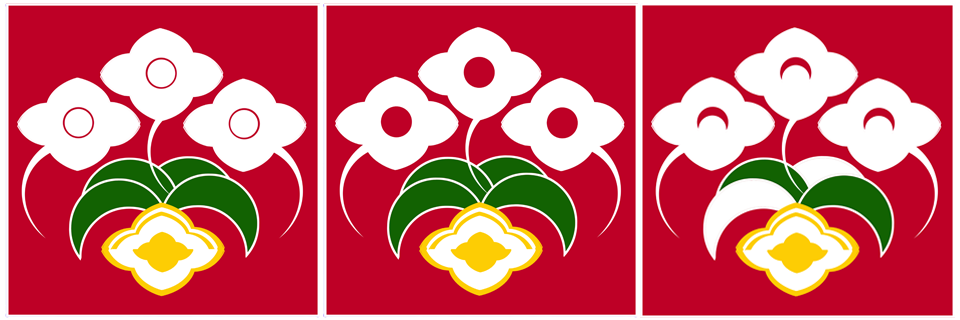The abscission or "breakaway" zone between the actual leaf blade and the leaf sheath is made out of specialized cells with thinner cell walls, less cellulose and shorter in size. These cells are structurally weaker then the rest of the leaf cells and prone to "give up" or break in certain situations, causing the leaf blade to disconnect from the leaf sheath. The act of disconnecting is triggered either by the leaf being at the end of its lifecycle or stress, ex. drought, heat, disease or physical trauma.
Several types of tsuke in FUUKIRAN are observed and are a subject of appreciation. Each tsuke type is given a name in association with its shape.
A - CRESCENT MOON, B - STRAIGHT LINE, C - ARROW, D - MOUNTAIN , E - WAVE
Of all tsuke shapes, Crescent Moon and Straight Line are the most common. In some FUUKIRAN the distinction of tsuke could be vague, thus the Wave tsuke might look more like a Straight Line, than a Wave.
Comment: I recently learned that there is a "tsuke-less" FUUKIRAN. It is extremely rare, but it exists. A member of Facebook's Neofinetia Group had posted some pictures of the plant. This is another reminder about tremendous genetic plasticity within this species.














